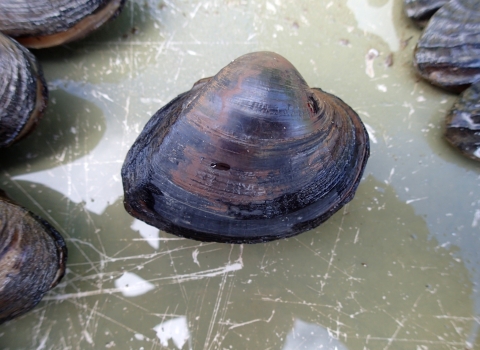The U.S. Fish and Wildlife Service (Service) under the Endangered Species Act (ESA), has broad authority to issue regulations for the conservation of threatened species. The ESA provides a specific list of prohibitions for endangered species under section 9 but does not automatically provide these same prohibitions to threatened species. Section 4(d) of the ESA allows the Service to establish prohibitions or exceptions to prohibitions for threatened species.
Based on the best available science and all of the comments we received, we have crafted 4(d) rule language to specify outcome-based management goals necessary for conservation of the species and for habitat to provide for the breeding, feeding, survival, and shelter of the Atlantic pigtoe. Section 4(d) rules do not remove or alter in any way the consultation requirements under section 7 of the ESA. Please consult the Raleigh Field Office for consultation guidance.
Prohibited activities
The primary goals of the 4(d) rule prohibitions are to conserve the species.
Purposeful “take” of Atlantic pigtoe, to include capture, handling, or other activities.
Incidental take of a Atlantic pigtoe from any activities without a permit, other than those excepted below. Activities that may affect Atlantic pigtoe include: development, pollution, agricultural practices, forest conversion and management, invasive species invasive species
An invasive species is any plant or animal that has spread or been introduced into a new area where they are, or could, cause harm to the environment, economy, or human, animal, or plant health. Their unwelcome presence can destroy ecosystems and cost millions of dollars.
Learn more about invasive species , dams and barriers, and energy production and mining.Importing or exporting, possession, delivering, receiving, transporting, or shipping.
Selling or offering for sale in interstate or foreign commerce.
Exceptions to the prohibitions:
Species restoration efforts by the State wildlife agency.
Channel restoration projects that create natural, physically stable, ecologically functioning streams.
Bank stabilization projects that use bioengineering methods to replace pre-existing, bare, eroding stream banks with vegetated, stable stream banks, thereby reducing bank erosion and instream sedimentation, and improving habitat conditions for the species.
Forestry-related activities, including silvicultural practices, forest management work, and fire control tactics, that implement state-approved BMPs.
BMP’s defined
The term Best Management Practices (BMPs) refers to effective, economical and practical treatments, methods or practices that can be implemented to help prevent pollution from getting into our water and thereby protect water quality.




